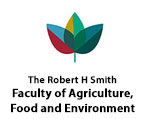Citation:
Abstract:
Acidovorax citrulli, the causal agent of bacterial fruit blotch (BFB) disease, infects cucurbit crops including watermelon and melon. This bacterium can enter the viable but nonculturable (VBNC) state following exposure to copper sulfate. Moreover, copper-induced VBNC A. citrulli cells can be resuscitated by EDTA. In this study, isobaric tag for relative and absolute quantification (iTRAQ) was used to compare protein profiles of VBNC cells, resuscitated cells at different stages and log-phase cells of the A. citrulli model strain AAC00-1. A total of 2672 proteins were identified, with 60 being differentially abundant in VBNC cells compared with log-phase cells, and 469 being differentially abundant in resuscitated cells compared with VBNC cells. Proteins involved in the arginine and proline metabolism pathway and degradation of aromatic compounds could be important for the VBNC cells. In the early resuscitation process, proteins associated with carbon metabolism, and degradation of naphthalene and aromatic compounds were significantly enriched, while proteins involved in oxidative phosphorylation, bacterial chemotaxis, ABC transporters and quorum sensing were significantly enriched at the late resuscitation stages. This is the first study reporting thorough protein profile analyses of VBNC and resuscitating cells of a plant-pathogenic bacterium. Biological significance: The VBNC state is a dormant-like condition that was reported to occur in many bacterial species, upon facing a variety of environmental stresses. Acidovorax citrulli is a seed borne pathogenic bacterium that threatens cucurbit production worldwide. Moreover, A. citrulli can enter into the VBNC state after treatment of copper sulfate, thus increasing its survival and dissemination probabilities. This study enriches our understanding of the mechanisms of entrance into and resuscitation from the VBNC state of this important plant-pathogenic bacterium. This knowledge could be exploited in the future to develop novel approaches to interfere with these processes, thus contributing to a more efficient management of this pathogen. In a broader perspective, the knowledge emerging from this study has implications to the general understanding of the VBNC state in bacteria. © 2019 Elsevier B.V.

